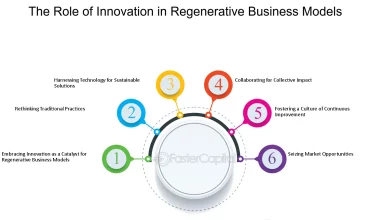
Best Practices to Secure Your API: A Complete Checklist
Modern digital interactions have been driven by APIs, which enable communication between applications and system connections. But along with this, you have to be accountable for safeguarding your API. In an era of escalating data breaches and cyber risks, API security can never be compromised. This complete checklist of best practices will ensure that you have covered all your bases on API security, regardless of whether you’re indulged in a custom eCommerce website development in India or developing custom mobile apps.
Authentication and Authorization
Use Strong Authentication: Implement strong authentication mechanisms (OAuth 2.0, JWT) to protect users’ and apps’ identities when they access your API.
Role-Based Access Control: Role-based access should be used to prevent unauthorized access to resources by non-compliant users/systems. Define clear roles and permissions.
Encryption
Transport Layer Security (TLS): Always use HTTPS (HTTP Secure) with TLS to encrypt data in transit. This prevents eavesdropping and man-in-the-middle attacks.
Data Encryption: Encrypt sensitive data using strong encryption algorithms. This is crucial for safeguarding data stored on servers or databases.
API Keys
API Key Management: Issue API keys to authorized users and applications. Implement a secure mechanism for generating, storing, and rotating API keys. Avoid hardcoding keys in source code.
Rate Limiting: Implement rate limiting to prevent abuse of API keys and protect against Distributed Denial of Service (DDoS) attacks.
Input Validation
Sanitize Inputs: Validate and sanitize all input data to prevent SQL injection, cross-site scripting (XSS), and other injection attacks.
Content-Type Validation: Enforce strict Content-Type validation to ensure that the data sent to the API matches the expected format.
Error Handling
Generic Error Messages: Avoid exposing sensitive information in error messages. Use generic error messages to prevent attackers from gaining insights into your API’s structure.
Error Logging: Implement error logging and monitoring to detect and respond to security incidents in real-time.
API Versioning
Version Control: Maintain versioning for your APIs to ensure backward compatibility. This allows you to roll out security updates without disrupting existing users.
Cross-Origin Resource Sharing (CORS)
CORS Configuration: Set up CORS headers to specify which domains are allowed to make requests to your API. This prevents cross-site request forgery (CSRF) attacks.
Secure File Uploads
File Type Verification: Implement file type verification to ensure that uploaded files are of the expected format and not malicious.
File Storage: Store uploaded files in a secure location with limited access permissions. Consider using content delivery networks (CDNs) for file delivery.
Regular Security Audits
Penetration Testing: Conduct regular penetration testing and security audits to identify vulnerabilities in your API. Address any issues promptly.
API Gateway
API Gateway: Consider using an API gateway to centralize the security, routing, and monitoring of your APIs. Your API gateway offers an added layer of security.
Rate Limiting and Throttling
Rate Limiting: Implement rate limiting and throttling to control the number of requests made to your API. This prevents abuse and helps maintain system performance.
Compliance with Standards
Compliance: Ensure that your APIs comply with industry-specific security standards, such as HIPAA for healthcare or PCI DSS for payment processing.
Security Headers
HTTP Security Headers: Use security headers like Content Security Policy (CSP), Strict Transport Security (HSTS), and X-Content-Type-Options to enhance security.
Authentication Tokens
Token Expiration: Set token expiration times to limit the window of vulnerability if tokens are compromised.
Refresh Tokens: Implement refresh tokens to allow users to obtain new access tokens without re-entering their credentials.
Monitoring and Logging
Logging: Maintain detailed logs of API activity, including authentication attempts and access patterns. Analyze logs for signs of suspicious behavior.
Real-time Monitoring: Use real-time monitoring solutions to detect and respond to security incidents promptly.
Security Education
Security Training: Ensure that your development and operations teams receive security training to stay informed about the latest threats and best practices.
Incident Response Plan
Incident Response: Develop and regularly update an incident response plan to handle security breaches effectively. Test the plan through simulations.
Custom Mobile App Development Integration
Secure Integration: If your API is used by mobile apps developed by your team, ensure secure integration practices during custom mobile app development. Securely store API keys and tokens on mobile devices.
eCommerce Integration
E-commerce Integration: If your API is integrated with the solution offered by a custom e-commerce website development team in India, collaborate closely with them to ensure secure API usage. Implement secure payment processing and user data handling.
Documentation and Education
Documentation: Provide clear and comprehensive API documentation to help users understand how to interact securely with your API.
User Education: Educate your API users about security best practices and the importance of secure API usage.
Conclusion
API security is paramount in today’s digital landscape. Whether you’re involved in custom eCommerce website development or custom mobile app development, following this checklist of best practices will help you safeguard your APIs from potential threats and vulnerabilities. Securing APIs shields confidential information establishes users’ confidence, and protects brand reputation amidst the continuous battle against cyber threats.
Xportsoft Technologies’ custom e-commerce solution thrives at API security with bespoke offerings that focus on strong authentication, encryption, and complete data privacy. Unlike most e-commerce platforms, the company tailors every element from API Integration to compliance with top industry security practices. This degree of tailoring guarantees that your API is resistant to developing dangers and weaknesses, giving unequaled assurance to your e-trade activities. What sets the solution apart is how flexible and rigid the security measures are, along with specifically tailored features that offer more than protecting just your REST API — they will help you improve overall e-commerce performance compared to other e-commerce platforms.




